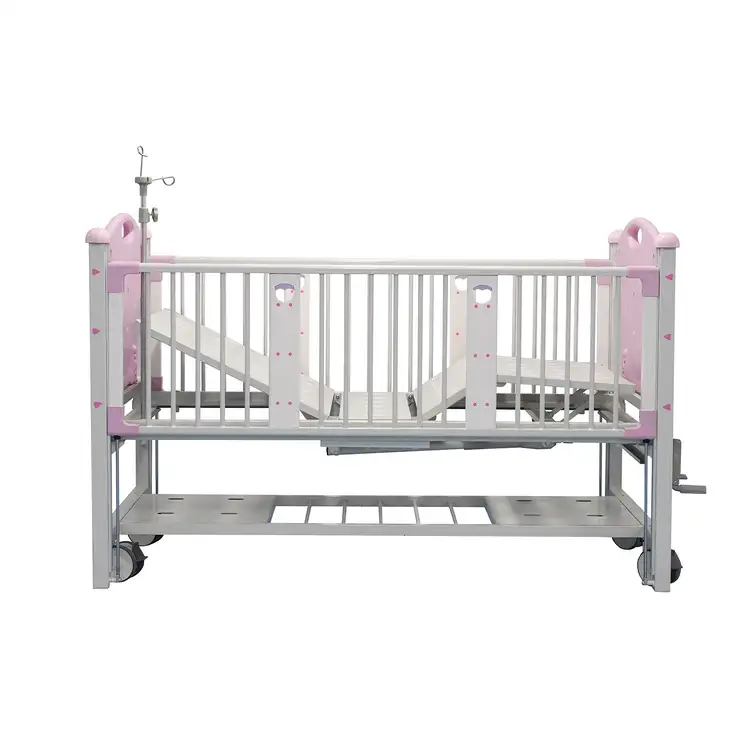Address
304 North Cardinal St.
Dorchester Center, MA 02124
Work Hours
Monday to Friday: 7AM - 7PM
Weekend: 10AM - 5PM
Welcome to My Blog!
Before we dive into the content, I’d love for you to join me on my social media platforms where I share more insights, engage with the community, and post updates. Here’s how you can connect with me:
Facebook:https://www.facebook.com/profile.php?id=100071234835011
LinkedIn:https://www.linkedin.com/company/74943205/admin/dashboard/
YouTube:https://www.youtube.com/@shandongexpertmedicalequip4695
TikTok:https://www.tiktok.com/@expertmedical
Now, let’s get started on our journey together. I hope you find the content here insightful, engaging, and valuable.
Children’s hospital beds are specially designed medical beds that cater to the unique needs of pediatric patients. They offer a range of benefits that enhance comfort, safety, and overall care quality for young patients. Understanding these advantages can help parents and healthcare professionals make informed decisions when it comes to pediatric care. This article delves into the various benefits of using children’s hospital beds, the essential features to look for, and how they can positively impact the healing process.

A children’s hospital bed is a medical bed designed specifically for infants, toddlers, and older children. These beds are built to accommodate the varying needs of young patients, ensuring both comfort and safety. They typically include features such as adjustable height, side rails, and various support systems that help caregivers attend to the child easily.
Children’s hospital beds come with several essential features, including:
| Feature | Description |
|---|---|
| Adjustable Height | Allows for easy access and management by caregivers |
| Side Rails | Prevents falls and enhances safety |
| Weight Capacity | Designed to support the varying weights of children |
| Specialized Mattresses | Provides comfort and support for different needs |
One of the primary benefits of a children’s hospital bed is the comfort it provides. Unlike standard beds, these specialized beds are designed with the child’s anatomy in mind. They often come with features that allow for better positioning, which can reduce discomfort during recovery. A well-designed bed can significantly improve a child’s overall experience in a hospital setting.

Safety is paramount in pediatric care. Children’s hospital beds often include features such as side rails that can be raised to prevent falls. This is especially important for young patients who may be restless or confused due to medication or illness. The adjustable height also helps caregivers reach the child without straining, minimizing the risk of injury.
Children’s hospital beds are designed to accommodate various medical procedures. The adjustable height allows healthcare providers to perform examinations and treatments with ease. Additionally, the design of these beds often allows for quick access to medical equipment, ensuring that care is delivered promptly and efficiently.
Having a child in the hospital can be a stressful experience for families. Children’s hospital beds are often designed to support family involvement in care. The adjustable features allow parents to be close to their child, providing comfort and reassurance during difficult times. Some beds even come with features that allow for sleeping or resting alongside the child.
Comfort and safety directly contribute to a child’s recovery process. Research shows that children who feel safe and comfortable tend to recover faster. The design of children’s hospital beds, with their supportive features, can facilitate rest and sleep, both of which are crucial for healing.
In summary, children’s hospital beds play a vital role in pediatric care. Their unique features enhance comfort, improve safety, and facilitate medical procedures, all while supporting family involvement in the care process. By choosing a suitable children’s hospital bed, caregivers can significantly improve the overall experience for young patients, aiding in their recovery and wellbeing.
The weight capacity of children’s hospital beds typically ranges from 150 to 300 pounds, depending on the model and design.
When selecting a children’s hospital bed, consider factors such as the child’s age, weight, required features (like height adjustment and side rails), and any specific medical needs.
Children’s hospital beds are primarily designed for infants and children up to a certain weight limit, usually around adolescence. Older children may require different accommodations.
Children’s hospital beds must comply with safety standards set by regulatory bodies, ensuring that they are safe for use in medical settings.
Yes, many children’s hospital beds are designed with space and accessibility in mind, allowing for easy placement of medical equipment such as monitors and IV poles.
Parents can help ensure comfort by adjusting the bed’s height, using appropriate bedding, and encouraging the child to personalize their space with familiar items like blankets or toys.
The cost of a children’s hospital bed can vary widely, typically ranging from $1,000 to $5,000 or more, depending on the features and specifications.
Yes, many medical supply companies offer rental options for children’s hospital beds, which can be a cost-effective solution for short-term needs.
Children’s hospital beds should be regularly inspected for any wear and tear, with maintenance checks recommended every few months to ensure they remain safe and functional.
Yes, many families choose to use children’s hospital beds at home for ongoing care, particularly for children with chronic conditions or those recovering from surgery.
